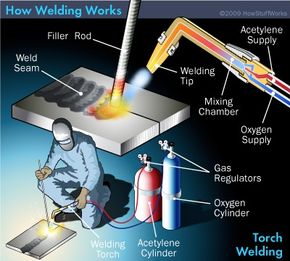Achieving Welding Excellence: Revealing the Secrets of WPS Application and Optimization
In the realm of welding, attaining quality is a quest that pivots on the careful application and optimization of Welding Treatment Specs (WPS) By diving right into the essential components, methods, difficulties, and finest practices connected with WPS, a globe of welding quality waits for those that are ready to discover its midsts.
Relevance of WPS in Welding
The Relevance of Welding Procedure Specs (WPS) in the welding sector can not be overemphasized, acting as the backbone for making sure uniformity, quality, and safety and security in welding procedures. A WPS offers comprehensive instructions on exactly how welding is to be accomplished, including necessary variables such as materials, welding procedures, joint style, filler metals, interpass and preheat temperature levels, welding currents, voltages, travel speeds, and much more. By sticking to a distinct WPS, welders can keep uniformity in their job, bring about constant weld high quality across various tasks.

Secret Elements of WPS
Talking about the integral parts of a welding procedure spec (WPS) is necessary for comprehending its role in welding procedures. A thorough WPS consists of several crucial elements that guide welders in accomplishing high quality and uniformity in their job. One vital facet of a WPS is the welding process requirements, which details the details welding procedures to be used, such as gas tungsten arc welding (GTAW) or secured steel arc welding (SMAW) Furthermore, the WPS includes information on the welding products, such as the kind and specifications of the base metal and filler steel to be utilized. The WPS additionally defines vital variables like welding specifications, preheat and interpass temperature needs, and post-weld heat therapy procedures. In addition, it consists of details on joint style, fit-up, and any type of special methods or safety measures required for the welding operation. By including these crucial elements right into the WPS, welding treatments can be standardized, guaranteeing quality, efficiency, and security in welding operations.
Methods for WPS Optimization

Second of all, training and qualification of welding workers according to the certain requirements of the WPS is paramount. Offering extensive training programs and ensuring that welders are licensed to perform procedures outlined in the WPS can lead to higher quality welds and decreased rework.
Additionally, leveraging technology such as welding software program and monitoring systems can help in enhancing WPS. These tools can assist in monitoring variables, guaranteeing parameters are within defined limits, and supplying real-time comments to welders, allowing them to make immediate modifications for boosted weld high quality.
Usual Challenges and Solutions
Facing barriers in carrying out Look At This the methods for WPS optimization can hinder welding procedures' effectiveness and quality. One typical difficulty is insufficient training or understanding of the welding procedure specifications (WPS) amongst the welding team. This can lead to incorrect execution of welds, resulting in issues and revamp. To address this, thorough training programs must be applied to make sure that all welders excel in interpreting and using WPS accurately.
One more challenge is the lack of correct documentation and record-keeping, which is crucial for WPS optimization. Without clear documents of welding criteria, materials utilized, and assessment outcomes, it becomes tough to identify locations for enhancement and ensure uniformity in welding procedures. Applying a durable documentation system, such as digital welding management software program, can assist enhance record-keeping and facilitate information evaluation for continuous enhancement.
Furthermore, inconsistent welding tools calibration and maintenance can posture a substantial challenge to WPS optimization. Routine tools checks, calibration, and maintenance routines should be complied with purely to make sure that welding parameters are precisely controlled and kept within the defined resistances (welding WPS). By resolving these common challenges with positive remedies, welding procedures can improve efficiency, top quality, and general welding excellence
Ideal Practices for WPS Implementation
To make certain successful WPS execution in welding procedures, adherence to sector criteria and careful attention to information are critical. When official website starting WPS implementation, it is essential to start by extensively recognizing the particular welding needs of the project. This entails a thorough evaluation of the welding procedure requirements, materials to be bonded, and the environmental conditions in which the welding will occur.
Once the demands are clear, the next action is to choose the suitable welding procedure that straightens with these requirements. This involves consulting the relevant codes and criteria, such as those provided by the American Welding Culture (AWS) or the International Organization for Standardization (ISO), to make certain compliance and high quality.
In addition, recording the whole WPS application process is vital for traceability and quality assurance. Comprehensive documents must be maintained pertaining to welding criteria, material preparation, interpass and preheat temperatures, welding consumables utilized, and any discrepancies from the original procedure. Regular audits and reviews of the WPS can assist recognize locations for improvement and guarantee ongoing optimization of the welding procedure.


Conclusion
In conclusion, the execution and optimization of Welding Procedure Specifications (WPS) is important for accomplishing welding excellence. By understanding the crucial aspects of WPS, carrying out efficient strategies for optimization, dealing with common difficulties, and adhering to ideal techniques, welders can guarantee top notch welds and secure working problems. It is imperative for experts in the welding industry to prioritize the proper implementation of WPS to boost overall welding performance and accomplish desired end results.
The Value of Welding Procedure Requirements (WPS) in the welding sector can not be overstated, offering as the foundation for guaranteeing consistency, high quality, and safety in welding operations. A WPS supplies thorough instructions on just how welding is to be carried out, consisting of essential variables such as materials, welding processes, joint layout, filler steels, interpass and preheat temperatures, welding currents, voltages, travel rates, and a lot more. One essential aspect of a WPS is the welding process spec, which details the certain welding procedures click here to find out more to be utilized, such as gas tungsten arc welding (GTAW) or protected metal arc welding (SMAW) By integrating these vital components right into the WPS, welding treatments can be standard, making certain quality, performance, and safety and security in welding procedures.
It is important for experts in the welding sector to prioritize the appropriate implementation of WPS to boost general welding performance and accomplish wanted results.